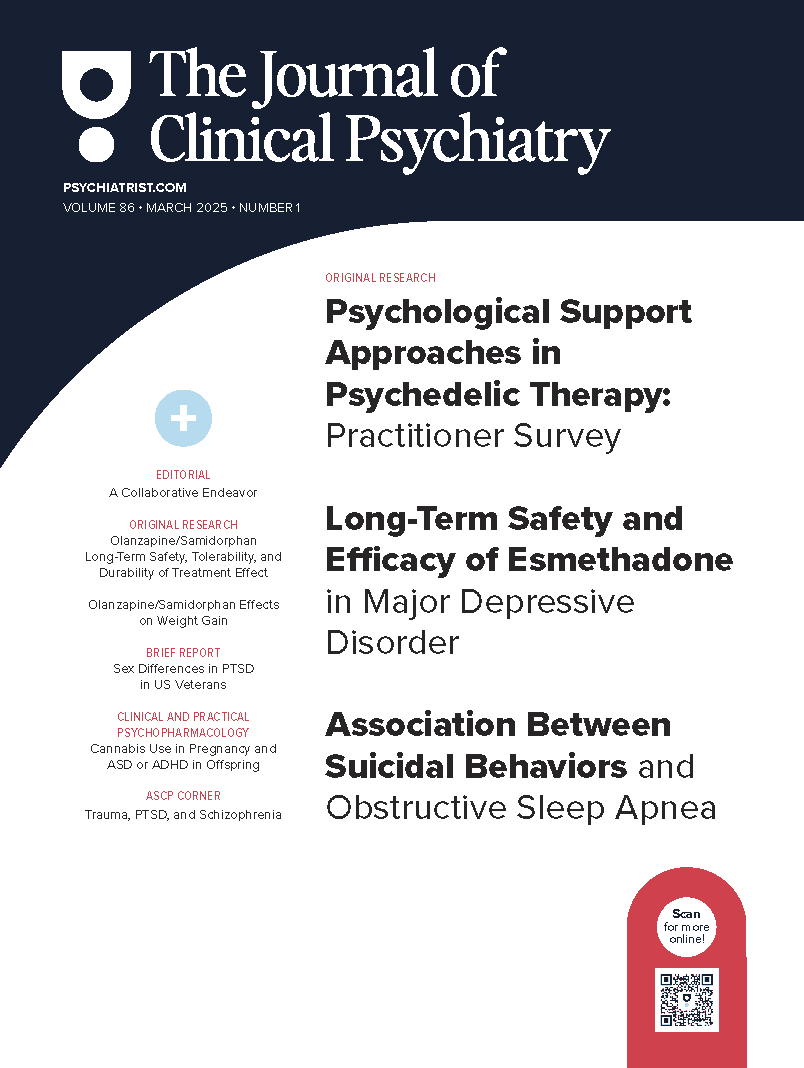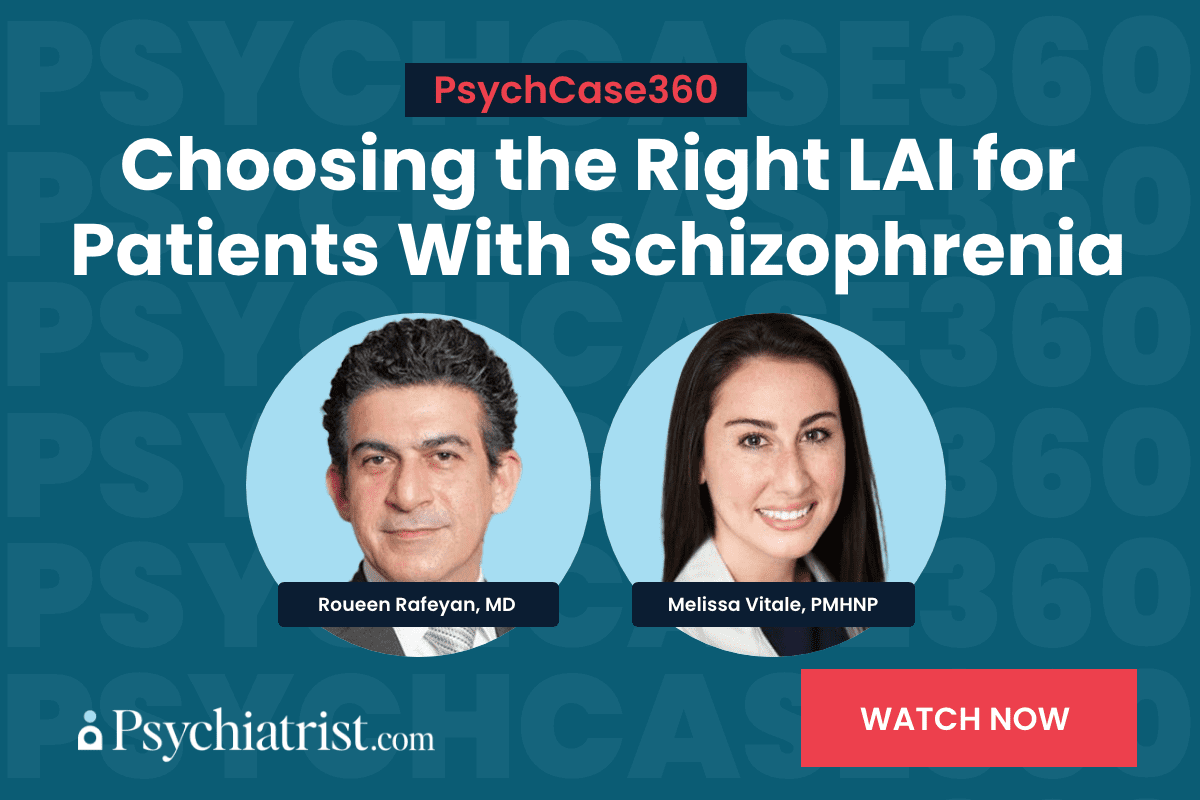
ABSTRACT
Objective: Suicide is the leading cause of premature death among patients with bipolar disorder (BD), so it is imperative to identify biological or psychometric markers for suicide risk. Previous functional neuroimaging studies of the general BD population have focused on abnormalities within cortical-subcortical circuits. The aim of the current study was to examine potential cortico-subcortical circuit abnormalities predictive of suicide attempt in patients with BD.
Methods: We examined functional connectivity (FC) based on 5 regions of interest: bilateral anterior cingulate cortex (ACC), medial frontal cortex, inferior frontal cortex, amygdala, and thalamus, by resting-state functional magnetic resonance imaging (rs-fMRI) in 65 participants, including patients with BD and suicide attempts (SA group; n = 24), patients with BD and no suicide attempts (NSA group; n = 15), and healthy control subjects (HC group; n = 26). Patients met DSM-5 criteria for bipolar I disorder with current major depressive episode.
Results: The total patient group (SA+NSA) exhibited significantly lower FC between bilateral thalamus and frontal cortex (F = 35.11, P < .01), and this deficit was most severe in the SA group. In addition, patients demonstrated significantly reduced FC values between bilateral inferior frontal gyrus and both inferior temporal gyrus (F = 20.68, P < .01) and fusiform gyrus (F = 20.98, P < .01), but FC was stronger in the SA group than the NSA group. Both patient groups also exhibited reduced FC based on these seeds including bilateral amygdala, medial frontal cortex, and ACC, but without significant differences between the SA and NSA groups.
Conclusions: The results suggest that reduced FC within specific frontothalamic circuits may increase the vulnerability for suicidal behavior in patients with BD. These FC abnormalities might provide potential predictors of suicide attempt in BD.
Members Only Content
This full article is available exclusively to Professional tier members. Subscribe now to unlock the HTML version and gain unlimited access to our entire library plus all PDFs. If you’re already a subscriber, please log in below to continue reading.
References (75)

- Axelsson R, Lagerkvist-Briggs M. Factors predicting suicide in psychotic patients. Eur Arch Psychiatry Clin Neurosci. 1992;241(5):259–266. PubMed CrossRef
- Dutta R, Boydell J, Kennedy N, et al. Suicide and other causes of mortality in bipolar disorder: a longitudinal study. Psychol Med. 2007;37(6):839–847. PubMed CrossRef
- Ösby U, Brandt L, Correia N, et al. Excess mortality in bipolar and unipolar disorder in Sweden. Arch Gen Psychiatry. 2001;58(9):844–850. PubMed CrossRef
- Abreu LN, Lafer B, Baca-Garcia E, et al. Suicidal ideation and suicide attempts in bipolar disorder type I: an update for the clinician. Br J Psychiatry. 2009;31(3):271–280. PubMed CrossRef
- Dome P, Rihmer Z, Gonda X. Suicide risk in bipolar disorder: a brief review. Medicina (Kaunas). 2019;55(8):403. PubMed CrossRef
- Ballard ED, Vande Voort JL, Luckenbaugh DA, et al. Acute risk factors for suicide attempts and death: prospective findings from the STEP-BD study. Bipolar Disord. 2016;18(4):363–372. PubMed CrossRef
- Dell’Osso B, Vismara M, Dobrea C, et al. Clinical characterization of Italian suicide attempters with bipolar disorder. CNS Spectr. 2018;23(4):271–277. PubMed CrossRef
- Passos IC, Mwangi B, Cao B, et al. Identifying a clinical signature of suicidality among patients with mood disorders: a pilot study using a machine learning approach. J Affect Disord. 2016;193:109–116. PubMed CrossRef
- Hawton K, Sutton L, Haw C, et al. Suicide and attempted suicide in bipolar disorder: a systematic review of risk factors. J Clin Psychiatry. 2005;66(6):693–704. PubMed CrossRef
- Leverich GS, Altshuler LL, Frye MA, et al. Factors associated with suicide attempts in 648 patients with bipolar disorder in the Stanley Foundation Bipolar Network. J Clin Psychiatry. 2003;64(5):506–515. PubMed CrossRef
- Tondo L, Baldessarini RJ, Hennen J, et al. Lithium treatment and risk of suicidal behavior in bipolar disorder patients. J Clin Psychiatry. 1998;59(8):405–414. PubMed CrossRef
- Dilsaver SC, Chen YW, Swann AC, et al. Suicidality, panic disorder and psychosis in bipolar depression, depressive-mania and pure-mania. Psychiatry Res. 1997;73(1-2):47–56. PubMed CrossRef
- Marangell LB, Bauer MS, Dennehy EB, et al. Prospective predictors of suicide and suicide attempts in 1,556 patients with bipolar disorders followed for up to 2 years. Bipolar Disord. 2006;8(5 Pt 2):566–575. PubMed CrossRef
- Oquendo MA, Waternaux C, Brodsky B, et al. Suicidal behavior in bipolar mood disorder: clinical characteristics of attempters and nonattempters. J Affect Disord. 2000;59(2):107–117. PubMed CrossRef
- Baldessarini RJ, Vázquez GH, Tondo L. Bipolar depression: a major unsolved challenge. Int J Bipolar Disord. 2020;8(1):1. PubMed CrossRef
- Tondo L, Vázquez GH, Pinna M, et al. Characteristics of depressive and bipolar disorder patients with mixed features. Acta Psychiatr Scand. 2018;138(3):243–252. PubMed CrossRef
- Pacchiarotti I, Bond DJ, Baldessarini RJ, et al. The International Society for Bipolar Disorders (ISBD) task force report on antidepressant use in bipolar disorders. Am J Psychiatry. 2013;170(11):1249–1262. PubMed CrossRef
- Cipriani A, Pretty H, Hawton K, et al. Lithium in the prevention of suicidal behavior and all-cause mortality in patients with mood disorders: a systematic review of randomized trials. Am J Psychiatry. 2005;162(10):1805–1819. PubMed CrossRef
- McKnight RF, Adida M, Budge K, et al. Lithium toxicity profile: a systematic review and meta-analysis. Lancet. 2012;379(9817):721–728. PubMed CrossRef
- Bani-Fatemi A, Tasmim S, Graff-Guerrero A, et al. Structural and functional alterations of the suicidal brain: an updated review of neuroimaging studies. Psychiatry Res Neuroimaging. 2018;278:77–91. PubMed CrossRef
- Cox Lippard ET, Johnston JA, Blumberg HP. Neurobiological risk factors for suicide: insights from brain imaging. Am J Prev Med. 2014;47(suppl 2):S152–S162. PubMed CrossRef
- Leckman JF, Riddle MA. Tourette’s syndrome: when habit-forming systems form habits of their own? Neuron. 2000;28(2):349–354. PubMed CrossRef
- Cao J, Chen X, Chen J, et al. Resting-state functional MRI of abnormal baseline brain activity in young depressed patients with and without suicidal behavior. J Affect Disord. 2016;205:252–263. PubMed CrossRef
- Miller JN, Black DW. Bipolar disorder and suicide: a review. Curr Psychiatry Rep. 2020;22(2):6. PubMed CrossRef
- American Psychiatric Association. Diagnostic and Statistical Manual of Mental Disorders. 5th ed. American Psychiatric Publishing; 2013.
- First M, Williams J, Karg R, et al. Structured Clinical Interview for DSM-5–Research Version (SCID-5 for DSM-5, Research Version; SCID-5-RV). American Psychiatric Association; 2015:1–94.
- Hamilton M. A rating scale for depression. J Neurol Neurosurg Psychiatry. 1960;23(1):56–62. PubMed CrossRef
- Chao-Gan Y, Yu-Feng Z. DPARSF: a MATLAB toolbox for “pipeline” data analysis of resting-state fMRI. Front Syst Neurosci. 2010;4:13. PubMed
- Song XW, Dong ZY, Long XY, et al. REST: a toolkit for resting-state functional magnetic resonance imaging data processing. PLoS One. 2011;6(9):e25031. PubMed CrossRef
- Power JD, Barnes KA, Snyder AZ, et al. Spurious but systematic correlations in functional connectivity MRI networks arise from subject motion. Neuroimage. 2012;59(3):2142–2154. PubMed CrossRef
- Maldjian JA, Laurienti PJ, Kraft RA, et al. An automated method for neuroanatomic and cytoarchitectonic atlas-based interrogation of fMRI data sets. Neuroimage. 2003;19(3):1233–1239. PubMed CrossRef
- Drevets WC. Functional anatomical abnormalities in limbic and prefrontal cortical structures in major depression. Prog Brain Res. 2000;126:413–431. PubMed CrossRef
- Neumeister A, Young T, Stastny J. Implications of genetic research on the role of the serotonin in depression: emphasis on the serotonin type 1A receptor and the serotonin transporter. Psychopharmacology (Berl). 2004;174(4):512–524. PubMed CrossRef
- Young KA, Holcomb LA, Yazdani U, et al. Elevated neuron number in the limbic thalamus in major depression. Am J Psychiatry. 2004;161(7):1270–1277. PubMed CrossRef
- Young KA, Bonkale WL, Holcomb LA, et al. Major depression, 5HTTLPR genotype, suicide and antidepressant influences on thalamic volume. Br J Psychiatry. 2008;192(4):285–289. PubMed CrossRef
- Amen DG, Prunella JR, Fallon JH, et al. A comparative analysis of completed suicide using high resolution brain SPECT imaging. J Neuropsychiatry Clin Neurosci. 2009;21(4):430–439. PubMed CrossRef
- Jia Z, Wang Y, Huang X, et al. Impaired frontothalamic circuitry in suicidal patients with depression revealed by diffusion tensor imaging at 3.0 T. J Psychiatry Neurosci. 2014;39(3):170–177. PubMed CrossRef
- Cardoso EF, Maia FM, Fregni F, et al. Depression in Parkinson’s disease: convergence from voxel-based morphometry and functional magnetic resonance imaging in the limbic thalamus. Neuroimage. 2009;47(2):467–472. PubMed CrossRef
- Giakoumatos CI, Tandon N, Shah J, et al. Are structural brain abnormalities associated with suicidal behavior in patients with psychotic disorders? J Psychiatr Res. 2013;47(10):1389–1395. PubMed CrossRef
- Frankle WG, Huang Y, Hwang DR, et al. Comparative evaluation of serotonin transporter radioligands 11C-DASB and 11C-McN 5652 in healthy humans. J Nucl Med. 2004;45(4):682–694. PubMed
- Young KA, Holcomb LA, Bonkale WL, et al. 5HTTLPR polymorphism and enlargement of the pulvinar: unlocking the backdoor to the limbic system. Biol Psychiatry. 2007;61(6):813–818. PubMed CrossRef
- Wakana S, Jiang H, Nagae-Poetscher LM, et al. Fiber tract-based atlas of human white matter anatomy. Radiology. 2004;230(1):77–87. PubMed CrossRef
- Mamah D, Conturo TE, Harms MP, et al. Anterior thalamic radiation integrity in schizophrenia: a diffusion-tensor imaging study. Psychiatry Res. 2010;183(2):144–150. PubMed CrossRef
- Reiman EM, Lane RD, Ahern GL, et al. Neuroanatomical correlates of externally and internally generated human emotion. Am J Psychiatry. 1997;154(7):918–925. PubMed CrossRef
- Gutman DA, Holtzheimer PE, Behrens TE, et al. A tractography analysis of two deep brain stimulation white matter targets for depression. Biol Psychiatry. 2009;65(4):276–282. PubMed CrossRef
- Jia Z, Huang X, Wu Q, et al. High-field magnetic resonance imaging of suicidality in patients with major depressive disorder. Am J Psychiatry. 2010;167(11):1381–1390. PubMed CrossRef
- Schoene-Bake JC, Parpaley Y, Weber B, et al. Tractographic analysis of historical lesion surgery for depression. Neuropsychopharmacology. 2010;35(13):2553–2563. PubMed CrossRef
- McIntosh AM, Muñoz Maniega S, Lymer GK, et al. White matter tractography in bipolar disorder and schizophrenia. Biol Psychiatry. 2008;64(12):1088–1092. PubMed CrossRef
- Gonda X, Pompili M, Serafini G, et al. Suicidal behavior in bipolar disorder: epidemiology, characteristics and major risk factors. J Affect Disord. 2012;143(1-3):16–26. PubMed CrossRef
- Tondo L, Isacsson G, Baldessarini R. Suicidal behaviour in bipolar disorder: risk and prevention. CNS Drugs. 2003;17(7):491–511. PubMed CrossRef
- Pompili M, Gonda X, Serafini G, et al. Epidemiology of suicide in bipolar disorders: a systematic review of the literature. Bipolar Disord. 2013;15(5):457–490. PubMed CrossRef
- Gibbons RD, Hur K, Brown CH, et al. Relationship between antiepileptic drugs and suicide attempts in patients with bipolar disorder. Arch Gen Psychiatry. 2009;66(12):1354–1360. PubMed CrossRef
- Aron AR, Robbins TW, Poldrack RA. Inhibition and the right inferior frontal cortex. Trends Cogn Sci. 2004;8(4):170–177. PubMed CrossRef
- Aron AR, Robbins TW, Poldrack RA. Inhibition and the right inferior frontal cortex: one decade on. Trends Cogn Sci. 2014;18(4):177–185. PubMed CrossRef
- Li J, Duan X, Cui Q, et al. More than just statics: temporal dynamics of intrinsic brain activity predicts the suicidal ideation in depressed patients. Psychol Med. 2019;49(5):852–860. PubMed CrossRef
- Willeumier K, Taylor DV, Amen DG. Decreased cerebral blood flow in the limbic and prefrontal cortex using SPECT imaging in a cohort of completed suicides. Transl Psychiatry. 2011;1(8):e28. PubMed CrossRef
- van Tol MJ, Li M, Metzger CD, et al. Local cortical thinning links to resting-state disconnectivity in major depressive disorder. Psychol Med. 2014;44(10):2053–2065. PubMed CrossRef
- Siegle GJ, Thompson W, Carter CS, et al. Increased amygdala and decreased dorsolateral prefrontal BOLD responses in unipolar depression: related and independent features. Biol Psychiatry. 2007;61(2):198–209. PubMed CrossRef
- Hamilton JP, Etkin A, Furman DJ, et al. Functional neuroimaging of major depressive disorder: a meta-analysis and new integration of base line activation and neural response data. Am J Psychiatry. 2012;169(7):693–703. PubMed CrossRef
- Dolan RJ, Vuilleumier P. Amygdala automaticity in emotional processing. Ann N Y Acad Sci. 2003;985(1):348–355. PubMed CrossRef
- Kim SH, Hamann S. Neural correlates of positive and negative emotion regulation. J Cogn Neurosci. 2007;19(5):776–798. PubMed CrossRef
- Phelps EA, LeDoux JE. Contributions of the amygdala to emotion processing: from animal models to human behavior. Neuron. 2005;48(2):175–187. PubMed CrossRef
- Lai CH, Wu YT. Frontal-insula gray matter deficits in first-episode medication-naïve patients with major depressive disorder. J Affect Disord. 2014;160:74–79. PubMed CrossRef
- Leung KK, Lee TM, Wong MM, et al. Neural correlates of attention biases of people with major depressive disorder: a voxel-based morphometric study. Psychol Med. 2009;39(7):1097–1106. PubMed CrossRef
- Li CT, Lin CP, Chou KH, et al. Structural and cognitive deficits in remitting and non-remitting recurrent depression: a voxel-based morphometric study. Neuroimage. 2010;50(1):347–356. PubMed CrossRef
- Feeser M, Schlagenhauf F, Sterzer P, et al. Context insensitivity during positive and negative emotional expectancy in depression assessed with functional magnetic resonance imaging. Psychiatry Res. 2013;212(1):28–35. PubMed CrossRef
- Liu CH, Ma X, Wu X, et al. Resting-state brain activity in major depressive disorder patients and their siblings. J Affect Disord. 2013;149(1-3):299–306. PubMed CrossRef
- Naismith SL, Lagopoulos J, Ward PB, et al. Fronto-striatal correlates of impaired implicit sequence learning in major depression: an fMRI study. J Affect Disord. 2010;125(1-3):256–261. PubMed CrossRef
- Connolly CG, Wu J, Ho TC, et al. Resting-state functional connectivity of subgenual anterior cingulate cortex in depressed adolescents. Biol Psychiatry. 2013;74(12):898–907. PubMed CrossRef
- Guo W, Liu F, Xiao C, et al. Decreased insular connectivity in drug-naive major depressive disorder at rest. J Affect Disord. 2015;179:31–37. PubMed CrossRef
- Bush G, Luu P, Posner MI. Cognitive and emotional influences in anterior cingulate cortex. Trends Cogn Sci. 2000;4(6):215–222. PubMed CrossRef
- Zhou M, Hu X, Lu L, et al. Intrinsic cerebral activity at resting state in adults with major depressive disorder: a meta-analysis. Prog Neuropsychopharmacol Biol Psychiatry. 2017;75:157–164. PubMed CrossRef
- Pannekoek JN, van der Werff SJ, Meens PH, et al. Aberrant resting-state functional connectivity in limbic and salience networks in treatment–naïve clinically depressed adolescents. J Child Psychol Psychiatry. 2014;55(12):1317–1327. PubMed CrossRef
- Cáceda R, Bush K, James GA, et al. Modes of resting functional brain organization differentiate suicidal thoughts and actions: a preliminary study. J Clin Psychiatry. 2018;79(4):17m11901. PubMed CrossRef
- Ambrosi E, Arciniegas DB, Curtis KN, et al. Resting-state functional connectivity of the habenula in mood disorder patients with and without suicide-related behaviors. J Neuropsychiatry Clin Neurosci. 2019;31(1):49–56. PubMed CrossRef




